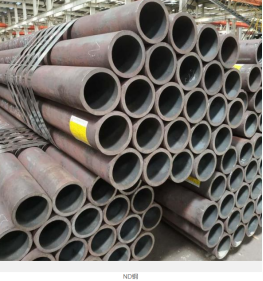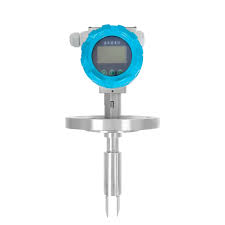Industry News
-

Analyze the Helium Detection in Lithium Bromide Absorption Units
Analyze the Helium Detection in Lithium Bromide Absorption Units In the manufacturing and maintenance of LiBr absorption units, vacuum level is the core factor determining unit performance and service life. Even minor leaks allow air to enter the unit, ...Read more -

Expansion joint on heat exchangers
Expansion joint on heat exchangers In Hope Deepblue lithium bromide absorption chiller, the heat exchangers in the unit are generally of two types: plate heat exchangers and shell-and-tube heat exchangers. The expansion joint is a flexible compensation ...Read more -

Four Key Factors for Maintaining the Reliability of LiBr Absorption Unit
Four Key Factors for Maintaining the Reliability of LiBr Absorption Unit LiBr absorption unit, serving as energy-saving solutions that utilize industrial waste heat, rely on stable operation for their effectiveness. As Hope Deepblue, with years of exper...Read more -

The Role of Cooling Water in the Absorber
The Role of Cooling Water in the Absorber As a reliable partner in the field of industrial refrigeration, Hope Deepblue understands the importance of every component in LiBr absorption chiller. In simple terms, the core function of cooling water in the ...Read more -

Why is the Rupture Disk Indispensable?
Why is the Rupture Disk Indispensable? As a pioneer , Hope Deepblue consistently places safety at the core of LiBr absorption chiller designs. We deeply understand how each component contributes to ensuring long-term, reliable operation. Sources of Pres...Read more -

Not Just Energy Saving, But Cost Saving: Why COP Is the Key Metric for Evaluating LiBr Absorption Units?
Not Just Energy Saving, But Cost Saving: Why COP Is the Key Metric for Evaluating LiBr Absorption Units? When selecting a LiBr absorption chiller/heat pump, you've likely heard the term "COP." But for decision-makers, it shouldn't be just a cold, techni...Read more -

Why is ND steel commonly used for heat exchanger tubes in HTG of Flue Gas Fired LiBr Absorption units?
Why is ND steel commonly used for heat exchanger tubes in HTG of Flue Gas Fired LiBr Absorption units? The heat source for the HTG in flue gas fired LiBr Absorption units is high-temperature flue gas (typically above 300°C) discharged from oil or gas-fi...Read more -

The Role of Tuning Fork Density Meters in LiBr Absorption Chillers
The Role of Tuning Fork Density Meters in LiBr Absorption Chillers In modern industrial applications, accurately monitoring the density and concentration of liquids is essential for ensuring stable equipment performance. The tuning fork density meter is...Read more -

Primary Applications and Functions of Check Valves in Steam LiBr Absorption Unit
Primary Applications and Functions of Check Valves in Steam LiBr Absorption Unit 1. Steam Piping (HTG Inlet) This represents the most critical application location for check valves. Function: Prevents backflow of steam and condensate. During sudden unit...Read more -

Why Hospitals Prefer LiBr Absorption Chillers
Why Hospitals Prefer LiBr Absorption Chillers In modern healthcare facilities, the role of cooling systems is of critical importance. From operating theaters and inpatient wards to pharmaceutical storage areas and laboratories, precise temperature and h...Read more -

What Are The Advantages of Low Pressure Steam Heat Pumps?
What Are The Advantages of Low Pressure Steam Heat Pumps? LiBr low pressure steam heat pumps utilize low-temperature “exhaust steam” generated during industrial production as a heat source to recover and elevate the temperature of lower-temperature he...Read more -

What is the Dilution Operation of a LiBr Absorption Chiller?
What is the Dilution Operation of a LiBr Absorption Chiller? LiBr absorption chillers, which use water as the refrigerant, are environmentally friendly, CFC-free, and operate with high stability. They are widely applied in large buildings and industrial...Read more





